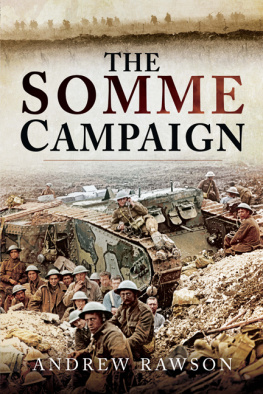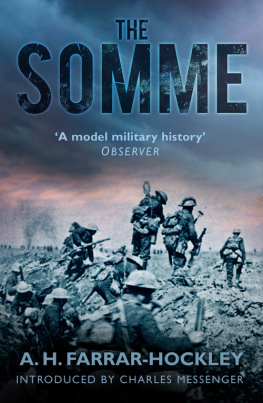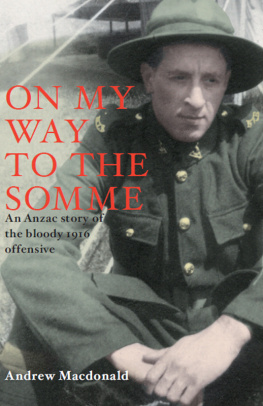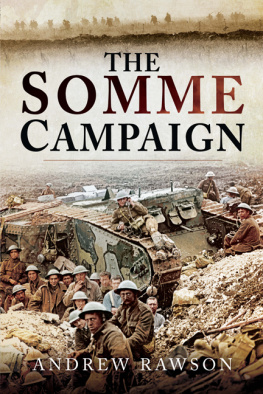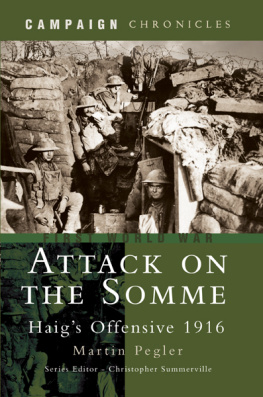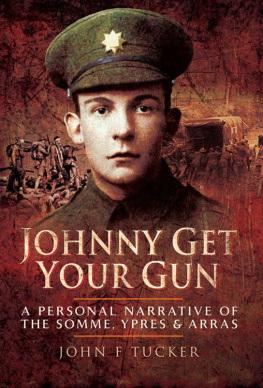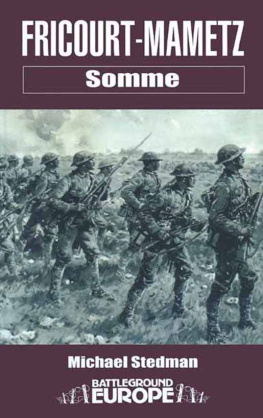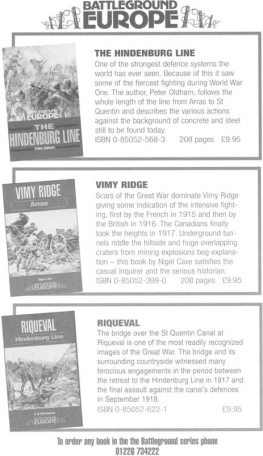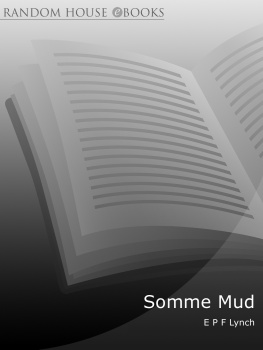Notes
General Sir Douglas Haigs General Headquarters (GHQ).
Or two divisions and eight battalions.
As if the prolonged barrage was not enough warning.
Lieutenant General Edmund Allenby, Third Army.
Sixty 75mm guns were also used to fire gas shell.
The old pattern 6-inch guns only had a range of 6,500 metres.
Extended due to bad weather.
There were premature bursts while many failed to explode; many shells fell short of their target.
They left their packs and greatcoats behind.
Nearly 17.9 tons of explosive in a tunnel under the German front trench.
Thin metal tubes were packed with explosives and pushed through the wire, several could be screwed together to get through thicker wire entanglements.
Divisional pioneer battalion.
92 Brigade was still in reserve with its four Hull Pals battalions.
Also known as the Heidenkopf Redoubt.
In small columns which were much easier to control than waves of men. They were spaced out to avoid casualties from artillery fire.
From 10 Brigade.
36th Division referred to the redoubt as the Parallelogram.
Some wore orange sashes to commemorate the anniversary of the Battle of the Boyne. It was on 1 July in the old Julian calendar.
Over 400 prisoners were taken and many ran back to the safety of the British trenches.
The commander of the 9th Inniskillings Trench Mortar Battery.
The corps boundary ran up Nab Valley and there was little co-ordination between X Corps and III Corps about how to deal with the re-entrant.
From 14 Brigade.
Of 161 Brigade, Royal Field Artillery, supporting 97 Brigades advance.
Known as the Lonsdales.
Russian saps were shallow tunnels which were opened into trenches by collapsing the roof.
From 96 Brigade.
From 14 Brigade.
Lieutenant MacNaghten was the son of The Honourable Sir Charles MacNaghten of Dundarave, Antrim. He had been taken prisoner and died of his wounds in captivity.
The road to Hamel would become known as Bloody Road due to the number of casualties.
To prevent them from becoming early casualties.
1/5th West Yorkshire and two companies each from the 1/7th and 1/8th West Yorkshire.
From 14 Brigade.
From 97 Brigade.
1st and 4th Tyneside Scottish, then the 2nd Tyneside Irish.
Creating what is now known as Lochnagar Crater.
2nd and 3rd Tyneside Scottish, then the 3rd Tyneside Irish.
Accompanied by the Bermuda Volunteer Company.
9,000lbs, 15,000lbs and 25,000lbs.
Captain Martin had made a model of the battlefield help train the troops. He predicted a machine-gun in the Shrine would cut them to pieces; he was correct and was one of the first to fall.
Casualties over 8,000; prisoners over 1,600.
From 91 Brigade.
General Walter Congreve had been awarded the Victoria Cross during the Boer War.
North of Carnoy and Maricourt.
From 53 Brigade.
The Germans called it the Jamin Work.
Supported by two 10th Essex platoons.
A huge static flamethrower with an underground fuel store and an above ground nozzle.
With two 7th Buffs companies.
The mortars had been set up at the end of Russian saps opened a few hours earlier.
55 Brigade.
7 Brigade.
From 56 Brigade.
The divisional pioneers.
56 Brigade.
24 Brigade, 23rd Division.
3 Guards Brigade, Guards Division.
56 Brigade.
69 Brigade.
Lieutenant Bell was killed five days later trying to silence another machine-gun in a similar fashion.
51 Brigade.
62 Brigade.
The short advance had also cost around 500 casualties.
91 Brigade.
Quadrangle Trench ran across the spur west of Mametz Wood.
The war poet Siegfried Sassoon.
51 Brigade.
51 Brigade.
53 Brigade.
Fourth Army only had 56,000 rounds for its 18-pounder field guns and 6-inch howitzers.
From 148 Brigade.
The German bombers were using a new lightweight egg shaped bomb for the first time and they could throw them further than the British Mills bomb.
75 Brigade.
37 Brigade.
35 Brigade.
75 Brigade.
Both from 74 Brigade, 25th Division.
74 Brigade.
A battalion of 111 Brigade (attached to 34th Division) attached to 56 Brigade.
From 96 Brigade, attached to 14 Brigade.
Attached from 69 Brigade.
51 Brigade.
50 Brigade.
The Green Howards believed the Staffords advanced a few minutes early, alerting the Germans.
Both from 50 Brigade.
Two companies did not advance due to a mix up in brigade orders.
21 Brigade.
From 90 Brigade.
Maxwell was awarded his Victoria Cross during the Boer War.
From 55 Brigade.
From 1 Brigade, 1st Division.
Each assault battalion had a company of the 8th Leicesters while the rest of the battalion was in support. The 9th Leicesters and 1st East Yorkshires (from 64 Brigade) were in reserve.
A regimental staff were found in the farm cellars the following morning.
Another account says 284 prisoners.
20 Brigade.
From 112 Brigade.
Called OG1 and OG2; Original German 1 and Original German 2.
2 Brigade
OG stands for Original German, as in the Original German Second Line.
3 Brigade.
68 Brigade.
From 34th Division.
9th Divisions pioneers.
26 Brigade.
27 Brigade.
3 Brigade.
Captain Harold Ackroyd would be awarded the Victoria Cross for a similar deed in the Ypres Salient on 6 September.
Or 10.45am, sources differ.
14 Brigade.
75 Brigade.
143 Brigade.
Major-General Archibald Montgomery and Major-General Charles Budworth.
From 3 Brigade.
2 Brigade, 1st Division in III Corps sector, Fourth Army.
The Australians called the searching of dug-outs and cellars ratting.
Better known as Gibraltar today, where you will find 1st Australian Divisions memorial
5th, 7th and 8th Battalions of the 2 (Victoria) Brigade had been attached to 3 Brigade for the attack.
Assisted by two companies of the 7th Battalion.
143 Brigade.
The 1/8th Royal Warwicks bombed forward again the following morning.
36 Brigade, 12th Division.
Serving with the 5th Machine Gun Company.
154 Brigade, 51st Division.
Because there had been a lull in their operations south of the river.
It would last for the first two hours of the battle.
Attached from 56 Brigade.
Both from 15 Brigade.
One from II Corps on the left and one from ANZAC Corps on the right.
36 Brigade.
37 Brigade.
The crews were dressed in black oilskins for protection.
6 Brigade.
All 7 Brigade.
Either side of a kink in the OG Trenches called the Elbow.
68 Brigade, 23rd Division.
Lieutenant Jacka had been awarded the Victoria Cross while a private in Gallipoli, the first Australian to receive the award.
13 Brigade.
13 Brigade.
144 Brigade.
Both from 145 Brigade.
144 Brigade.
A Chinese Attack was a simulated assault used to confuse the enemy. It could involve an artillery barrage, smoke, cheering and the waving of bayonets above the parapet to simulate an attack.
1 Brigade.
The Bartlett Forcing Jack had driven iron pipes filled with tin cans containing ammonal under no mans land.
44 Brigade.
46 Brigade.
The Liverpool Irish.
The Liverpool Scottish.
Captain Chavasse was awarded a second Victoria Cross for similar activities in the Ypres Salient the following year, only this time he succumbed to his wounds.
The division had dug 13,000 metres of new trench and improved 3,000 metres of existing trench in two weeks.
9 Brigade.
76 Brigade.
From 7 Brigade.
From 75 Brigade.
From 2nd Australian Division.

